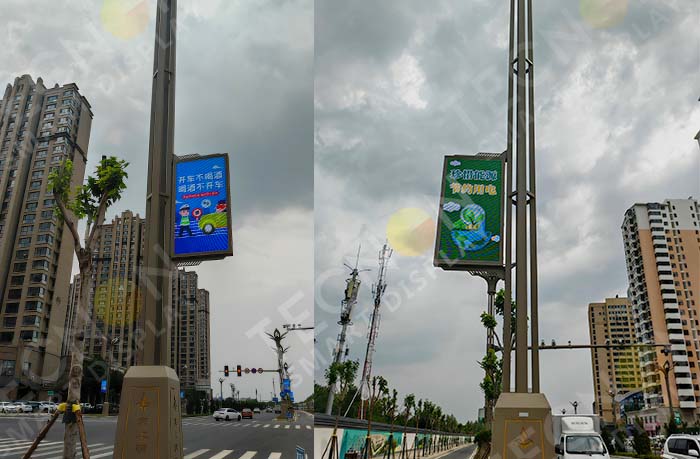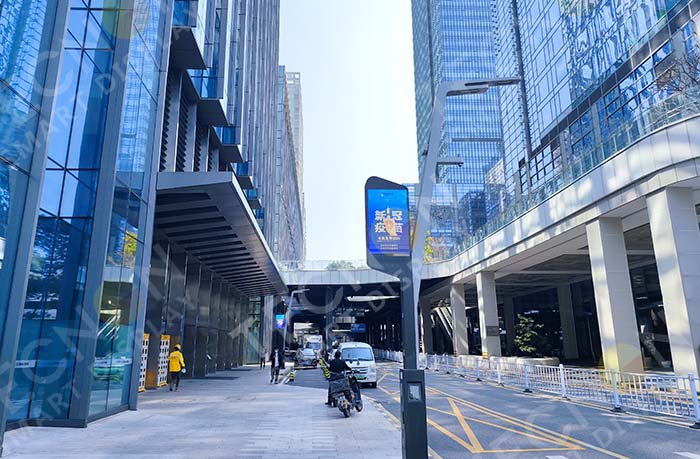Cities are changing fast. Beyond lighting up the streets, the smart lamppost is evolving into a central hub for urban data, connectivity, and public services. Unlike traditional streetlights, these poles combine sensors, communication modules, and digital displays to support the backbone of a smart city.
Why the Smart Lamppost Is More Than Just a Streetlight
When people first hear the term “smart lamppost”, they often think about LED lights or motion sensors. But today’s versions do much more. They can host 5G small cells, measure air quality, monitor traffic, and even provide emergency communication. By turning a simple pole into a multifunctional platform, cities save space, reduce costs, and open new opportunities for data-driven governance.

From Lighting to IoT Integration
The real value of the smart lamppole lies in its ability to integrate Internet of Things (IoT) functions. A single pole can support multiple devices:
- Environmental sensors to track air quality, temperature, or noise levels.
- Cameras and AI analytics for traffic management and pedestrian safety.
- Public Wi-Fi hotspots to enhance connectivity in busy districts.
- Digital signage for real-time information or advertising.
Instead of building separate infrastructure for each system, cities can consolidate them into one vertical structure. This makes smart pole deployment both efficient and scalable.
Smart Lampposts as 5G Enablers
One of the biggest challenges for 5G networks is coverage in dense urban areas. Traditional towers are expensive and hard to install in every corner. Smart street pole solve this problem by offering ready-made sites for small cell base stations. Because lampposts already line most streets, telecom providers can integrate hardware without disrupting urban landscapes.
This approach helps cities prepare for connected vehicles, augmented reality navigation, and future smart mobility solutions.

Data Collection and Urban Planning
A smart lamppost does not just provide light and connectivity. It also collects data that city planners can use. For example:
- Traffic flow analysis helps reduce congestion.
- Pedestrian counts guide the placement of crosswalks or bike lanes.
- Noise level monitoring can identify problem zones near residential areas.
- Weather sensors help predict flooding or improve climate resilience.
The more poles are connected, the richer the data becomes. This creates a living map of the city that helps officials make faster, evidence-based decisions.
Public Safety and Community Services
Smart lampposts also enhance safety. Integrated cameras can detect accidents or unusual activities. Emergency call buttons allow people to request help instantly. Some cities are testing smart poles with built-in defibrillators or loudspeakers to warn citizens in case of disasters.
At the same time, these poles support community interaction. Interactive displays can share transport schedules, event announcements, or local news. For tourists, digital signage provides maps or multilingual guidance.

Sustainability and Energy Efficiency
Even though the smart pole goes far beyond lighting, energy efficiency remains one of its strong points. Most models use LED technology, which consumes less power. Many are also equipped with solar panels or energy storage systems to operate independently from the grid.
In some pilot projects, poles even double as EV charging stations, allowing drivers to recharge while parked on the street. This multifunctional design maximizes urban infrastructure value.
Challenges and Future Outlook
Despite their benefits, smart lampposts face challenges. High upfront costs, data privacy concerns, and the need for cross-department collaboration often slow down adoption. Cities must ensure transparent data management and citizen trust while building sustainable business models.
Looking ahead, the smart lamppost will likely become a standard part of smart city ecosystems. As AI and edge computing grow, these poles could analyze data locally, reducing latency and bandwidth needs. Imagine a future where a lamppost not only lights your way but also alerts you to an open parking spot, guides autonomous vehicles, and keeps your neighborhood safe.

Conclusion
The smart lamppost is no longer a passive piece of street furniture. It is a multifunctional urban data hub that combines lighting, connectivity, safety, and sustainability. By rethinking how we use existing infrastructure, cities can accelerate their transition into smarter, greener, and more resilient places.
FAQs
Q1: What is a smart lamppost?
A smart lamppost is an upgraded streetlight that integrates lighting with IoT devices, sensors, 5G modules, and digital displays to improve city services and connectivity.
Q2: How do smart lampposts support 5G networks?
Smart lampposts provide ready-made sites for 5G small cells, helping telecom providers expand coverage in dense urban areas without building new towers.
Q3: What are the benefits of installing smart lampposts in cities?
They enhance energy efficiency, improve public safety, support data-driven planning, provide Wi-Fi, and enable services like EV charging or digital signage.
Q4: What challenges do smart lampposts face?
High initial costs, data privacy concerns, and the need for cross-department collaboration are the main challenges cities must address for large-scale adoption.
 Tecnon Smart Display Technology Shenzhen Co., Ltd.
Tecnon Smart Display Technology Shenzhen Co., Ltd.